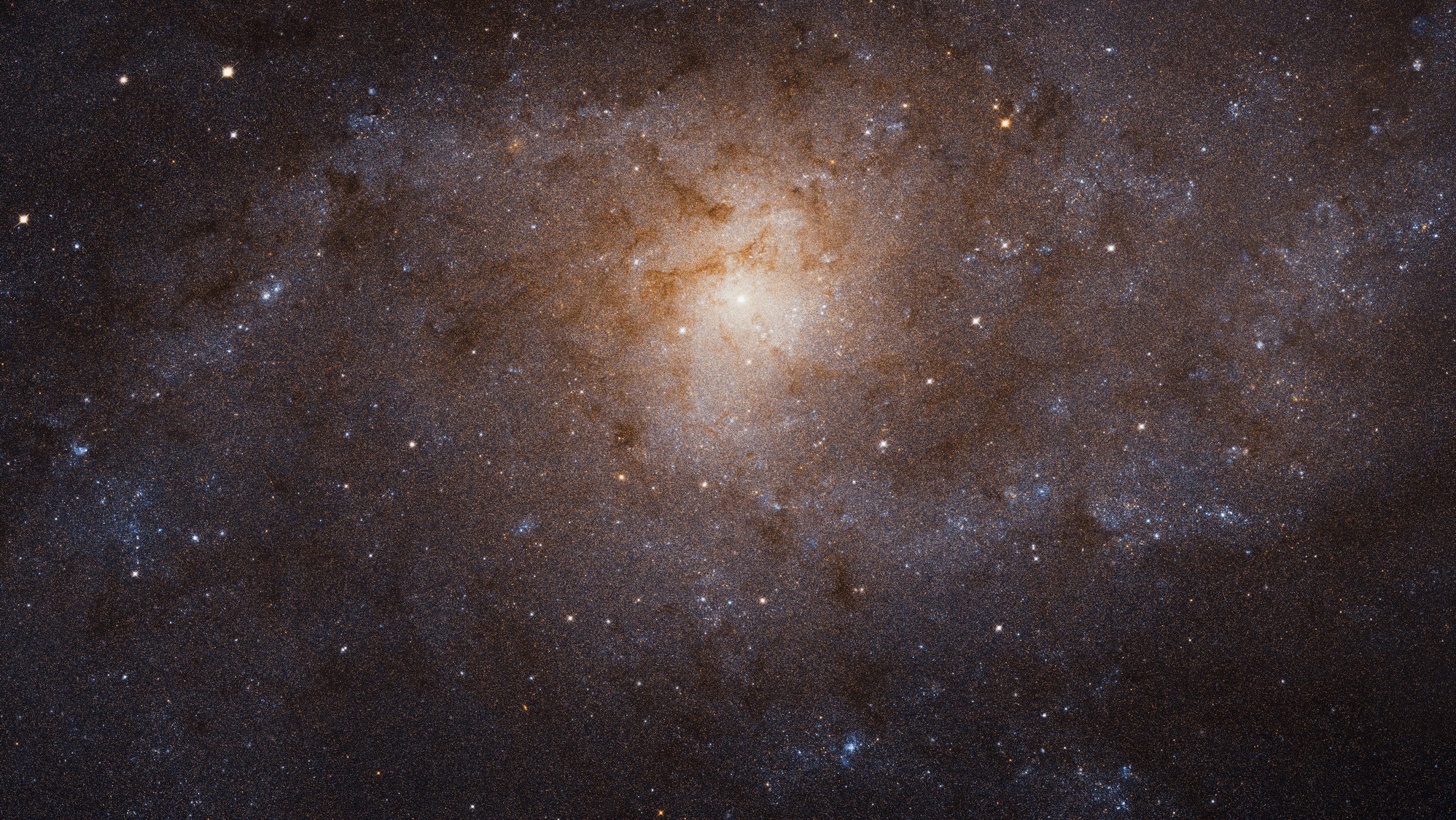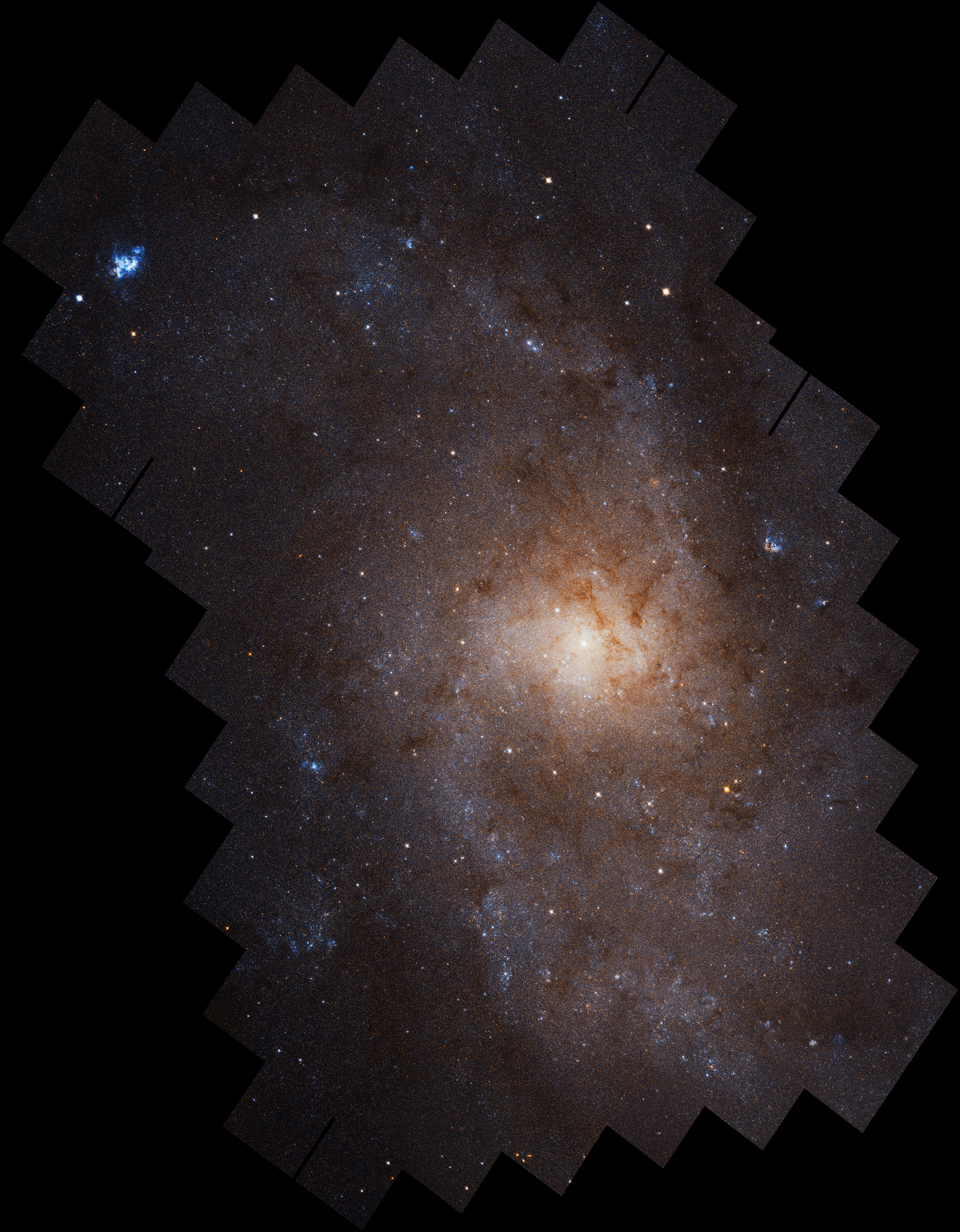3 min read

NASA's Hubble Space Telescope has produced this stunningly detailed portrait of the Triangulum galaxy (M33), displaying a full spiral face aglow with the light of nearly 25 million individually resolved stars. It is the largest high-resolution mosaic image of Triangulum ever assembled, composed of 54 Hubble fields of view. The cropped image above spans an area about 14,500 light-years across.
The Local Group of galaxies is dominated by the Milky Way, Andromeda and Triangulum. As the junior member of this trio of spiral galaxies, Triangulum provides the valuable comparisons and contrasts that only a close companion can. Most notably, Triangulum's star formation is 10 times more intense than in the comparable Hubble panorama of the neighboring Andromeda galaxy. "My first impression on seeing the Hubble images was, wow, that really is a lot of star formation," said astronomer Julianne Dalcanton of the University of Washington in Seattle, who led the project. Astronomers have only begun to mine the enormous amount of data generated by these new Hubble observations, and expect they will yield important insights into the effects of such vigorous star formation.

The orderly nature of Triangulum's spiral, with dust distributed throughout, is another distinctive feature. Astronomers think that Triangulum has been an introvert, avoiding disruptive interactions with other galaxies, instead spending the eons tending its well-ordered spiral and turning out new generations of stars. Further research may determine if Triangulum is actually a newer member of the Local Group of galaxies, and perhaps its quiet days will soon be over. Uncovering the Triangulum galaxy’s story will provide an important point of reference in understanding how galaxies develop over time, and the diverse paths that shape what we see today.
This mosaic was created from images taken by Hubble's Advanced Camera for Surveys between February 2017 and February 2018. The panoramic image will be presented at the 233rd meeting of the American Astronomical Society in Seattle, Washington.
The Hubble Space Telescope is a project of international cooperation between NASA and ESA (European Space Agency). NASA's Goddard Space Flight Center in Greenbelt, Maryland, manages the telescope. The Space Telescope Science Institute (STScI) in Baltimore, Maryland, conducts Hubble science operations. STScI is operated for NASA by the Association of Universities for Research in Astronomy in Washington, D.C.
To learn more, visit http://hubblesite.org/news_release/news/2019-01.
Contacts:
Leah Ramsay / Ray Villard
Space Telescope Science Institute, Baltimore, Maryland
667-218-6439 / 410-338-4514
lramsay@stsci.edu / villard@stsci.edu
Julianne Dalcanton / Ben Williams
University of Washington, Seattle, Washington
jd@astro.washington.edu / ben@astro.washington.edu







